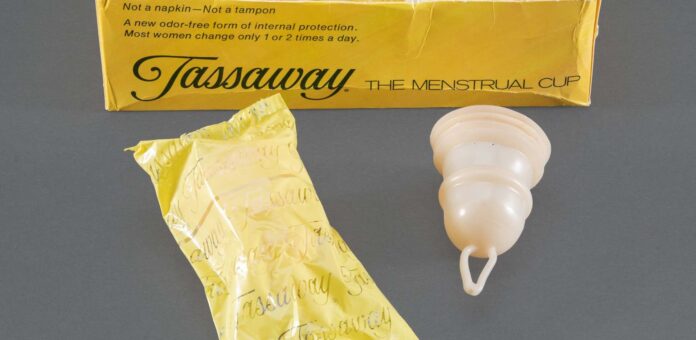Some 2 billion people in the world menstruate. An additional 1.5 billion have had or will have their periods. Nevertheless, menstruation is considered a taboo topic. The exhibition combines personal and museum objects, interviews, music, film and art to examine related discourse and debates over the last decades, trace menstrual product development from the late 19th century to the present and provide space for menstruators’ voices.
Menstruation has been part of the public discussion for about ten years now. Women publish period manifestos, campaign against period poverty, inadequate care and information, develop new menstrual products, and post their experiences on social media under hashtags such as #periodpositivity and #menstruationmatters. Even though every school now provides educational information, and menstrual products are sold for the most varied needs, the path to “period dignity” is still quite far. Neither have all the bodily processes surrounding menstruation been sufficiently researched, nor have the taboos about talking about it, period poverty, and other hurdles been eliminated, which would allow those who menstruate to experience a more dignified relationship with this natural process.
With Flow: The Exhibition on Menstruation, the Museum Europäischer Kulturen (MEK) presents a history of pragmatism and utopias, of inventiveness and activism. The exhibition brings together around 100 historical and brand-new menstrual products, as well as advertisements, diagrams, interviews and hands-on stations, to impart the status of current knowledge. Including nearly 200 everyday objects, photos, graphics, newspaper articles and social media posts, the exhibition features the discourses that for decades have accompanied those who menstruate. The topics discussed include issues such as performance, period poverty, waste, “normality”, a connectedness to nature, and moods.
An Exhibition Featuring Four Topics
The focus is on the experiences and voices of menstruators. Numerous film and music clips, as well as artworks, round out the exhibition. The content comprises four topics: “Geschichte der Unterwäsche und der Menstruationsprodukte” (History of Undergarments and Menstrual Products), “Aufklärung und aktuelles Wissen” (Education and Current Knowledge), “Diskurse rund um die Menstruation” (Discourses on All Things to Do with Menstruation) and “Popkultur und Kunst” (Pop Culture and Art).
History of Undergarments and Menstrual Products
The first topic deals with developing and marketing specially conceived menstrual products since the mid-19th century. There were already prototypes a century ago for all the menstrual cycle items available today; at the same time, DIY (do it yourself) solutions remained widespread into the late 20th century. A “photo studio” makes it possible for visitors to try on models of historical “undergarments for special days” and to experience on their own bodies what has changed over the decades.
Education and Current Knowledge
The second topic area contains basic information about the monthly cycle and menstruation. With diagrams, exhibits and expert interviews, the current state of knowledge is presented, open questions are addressed and refuted theories discussed.
Discourses on All Things to Do with Menstruation
The exhibition’s third topic area explores the discursive field that has formed the framework for talking about menstruation since the late 19th century. The ongoing revisions of how menstruation is viewed are summarised under four major “demands” that have been placed on menstruators in various forms for decades: “Do[n’t do] that!”, “That’s how you should be!”, “I bleed, therefore I am?”, and “Something has to change!”. Numerous exhibits, giant banners with advertising and photos, as well as found items from the press and social media, impressively illustrate the individual topics.
Pop Culture and Art
The final subject area examines the contributions of music, comedy, art and films to the public debate on menstruation. Exhibition content is also interactively communicated through numerous hands-on stations. The participatory emphasis is intended to provide visitors with multi-perspectival and sensomotoric approaches to the topic. Special offers are available for school classes and teachers.
Curatorial Team
Flow. The Exhibition on Menstruation is curated by Jana Wittenzellner, deputy director of the Museum Europäischer Kulturen, Franka Schneider, research associate and curator of the textile collection at MEK, and Sofia Botvinnik, research associate and curator of outreach at MEK.
Education and Outreach Programme
Curator’s tours are offered on the fourth Sunday of the month (summer break: July and August 2024), providing further exciting insights into the exhibition (3 pm). Tours for teens and adults are offered starting in November 2023, every two months, on the second Saturday of the month (3 pm).
As of February 2024, the MEK invites visitors to three Theme Days: On 25 February 2024, the subject is menstrual products; on 26 May 2024, two days before World Menstrual Hygiene Day (MHD), the event addresses how things have to change; and to conclude the exhibition, the Theme Day on 22 September 2024 focuses on what remains or is yet to come in the future. Each of these special Theme Day events offers a wide-ranging programme, including talks with guests, opportunities for exchange, workshops and film screenings. Information about related education and outreach programmes will soon be available online.
A special exhibition of the Museum Europäischer Kulturen (Museum of European Cultures) – Staatliche Museen zu Berlin
Source : Museen zu Berlin






